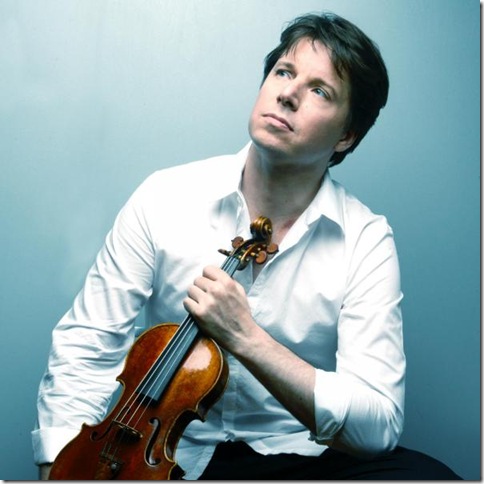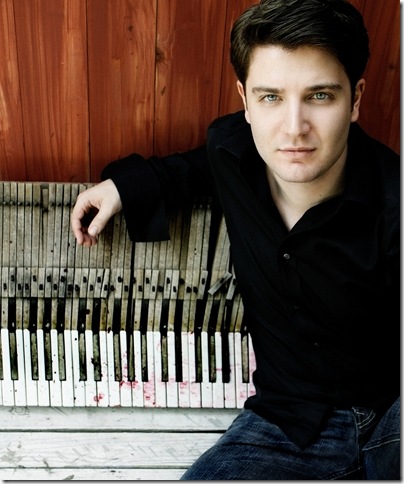The splendid American violinist Joshua Bell has been making something of a study of the three sonatas of Edvard Grieg in his regular recital tours.
Although the Third Sonata is the most well-known of the three, he was very excited about the Sonata No. 2 when he took it out on a tour a few years back, as he told me during an interview at the time; he said in some ways he liked the Second even better than the Third.
On Nov. 1, he brought the Sonata No. 1 (in F, Op. 8) to the Broward Center, and I imagine he probably loved it as much as the other two, to judge by his performance, in which he played it like the youthful masterwork it is. It is a lovely piece, written early in Grieg’s career (1865) when he was in his early 20s and only three years out of the Leipzig Conservatory. It’s one of his first mature works, though experts say it still hasn’t fully absorbed the Norwegian stylistic manner to which Grieg, brought up in Norway primarily speaking Danish, was still a newcomer.
Like all the most successful Grieg compositions, the First Sonata is full of beautiful melody and a fresh harmonic style in which directness of expression and clarity of emotion are paramount. Bell was accompanied in superb fashion by the Italian pianist Alessio Bax, who was fully with him in every interpretive choice, so much so that it was more of a two-person concert of equals than a concert by a soloist supported by a backing musician.
This was clear from the first two minor chords of the sonata, played by the piano alone, and which lead in a direction far away from the home key, until the violinist enters and starts to establish the tonal center around which the rest of the movement is based. When Bell came in, it was with a sense of surprise and expansiveness, and the rest of the movement unfolded with those characteristics leading the way.
One of the earliest examples of the Norwegian folk influence that would become an integral part of Grieg’s language appears in the second movement, with the first half a minor-key dance, and the middle section a hardanger-fiddle imitation that Bell played with a wonderful lightness that made an excellent contrast to the first section. The finale was in much that same spirit — fleet and joyous — with a compelling sense of forward motion that finished the sonata off in exemplary fashion.
Part of the pleasure of attending a Joshua Bell concert is hearing his astonishing technical command. He hits every note dead-on (I only heard two slightly questionable ones in the whole evening) and he has worked out every little note in each virtuoso passage, so much so that you can hear even the little changes in things like long trills, where in context it could be argued that it scarcely matters. It’s a testimony to the thoroughness and seriousness of his art, as well as his enviable fine motor control.
The concert opened with another sonata that should probably be better-known (at least by the public if not violinists), the A major Duo (D. 574) of Franz Schubert. The two musicians avoided a common Schubert pitfall, that of indulging the composer’s penchant for verbosity, by keeping tempos swift and paying scrupulous attention to dynamics. One of the most effective passages occurred in the second movement, in which the soft motivic fragments before the return of the scherzo theme diminished to the vanishing point. Similarly, the trio of that movement was quiet and intimate (though not any slower), and Bell held the very large audience’s attention by keeping it that way.
He showed the same power of narrative line in the first movement, again by making sure the music had ample dynamic contrast, and also by making every note, even in a passage of casual descending triplets, count as part of the whole. By doing that, a player makes it easy for the audience to understand what the music is all about.
The pretty slow movement was a model of elegant, tender playing in which emotion was strong but didn’t break its bounds; that sense of classical restraint made the music’s unexpected modulations that much more effective. And the finale had an infectious energy that conveyed well its feeling of breathless fecundity, one idea tumbling over another, and violin and piano racing to catch up with them. It was a virile, spotless performance that fully embraced Schubert’s ability to entertain.
Still another sonata occupied most of the second half, the Sonata No. 1 (in F minor, Op. 80) of Sergei Prokofiev. This composer’s two violin sonatas (even though the second was originally for flute) are among the finest of the 20th century, and the first’s general darkness does not obscure Prokofiev’s melodic gift.
Again, the partnership between Bell and Bax was beautiful to listen to. The two men gave the sonata a reading that was somber without being funereal, even with the famous example of the “wind whistling through the graveyard” that Prokofiev was trying to convey in the first movement and during its reprise in the finale. Bell played his rapid scales at an impossibly soft and whispery level, and Bax pushed distant, high, glassy tones out of the chords underneath, for a magically lovely effect.
The second movement had fire and sinew, with Bell in a forceful give-and-take with Bax, while in the slow third movement, the pianist’s triplets murmured in the background with great delicacy as Bell dug into the intensely emotional sliding chromatic notes of the primary melody. Bell emphasized the tricky rhythms of the finale’s first bars with carefully placed accents, and followed that with a hugely athletic traversal of the music that was thrilling to hear.
After the sonata, Bell played two encores: a transcription of Rachmaninov’s celebrated song Vocalise, and then the Introduction and Tarantella (Op. 43) of Pablo de Sarasate. In the Rachmaninov, his tone was tender and haunting, and he dashed off the Sarasate with an exemplary lightness and flawless technique.
Joshua Bell has been before the public for about 30 years now, and doubtless he has been a big inspiration to the remarkable number of excellent younger violinists now out making careers for themselves. I’ve seen him several times over the years, and his command of his instrument is always remarkable, his interpretations distinguished by palpable commitment and dedication, and his sense of showmanship canny and engaging.
Bell is one of the most important musicians in the relatively recent elevation of classical music to “cool” status, in part by virtue of his broad-minded tastes and still further by the application of the same high standards to everything he plays. He appears in South Florida every season, and it’s always good to see him; he is a modern master who never lets his audience down.
Editor’s note: The posting of this review was delayed by technical difficulties.

